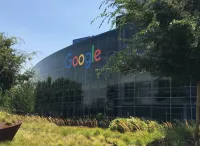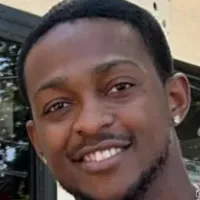Smartphones are advanced mobile phones with touchscreens and extensive capabilities beyond basic calls and texts. They offer web browsing, email, social media access, multimedia playback, GPS navigation, and support various communication methods. Distinguishing features include advanced hardware, mobile operating systems, internet access, business applications, mobile payments, and rich multimedia functionality encompassing music, video, gaming, and more.
1 hour ago : Early smartphone use linked to increased health risks in young children: New study.
A new study reveals that children owning smartphones before age 12 face heightened health risks, impacting their well-being during adolescence. The research emphasizes potential negative outcomes associated with early smartphone acquisition.
1992: IBM engineer Frank Canova develops "Angler" prototype
In 1992, IBM engineer Frank Canova developed a prototype called "Angler", which was demonstrated at COMDEX, marking an early step towards the development of the first commercially available smartphone.
1992: First law restricting mobile devices while driving was passed
In 1992, the first law restricting the use of mobile devices while driving was passed, marking the beginning of legal efforts to address distracted driving.
1994: BellSouth markets Simon Personal Communicator
In 1994, BellSouth marketed a refined version of the "Angler" prototype, named the Simon Personal Communicator, to consumers, featuring cellular calls, fax, email, and applications such as address book, calendar, and maps.
1995: The term "smart phone" coined
In 1995, the term "smart phone" (in two words) was coined, appearing in print describing AT&T's PhoneWriter Communicator.
March 1996: Hewlett-Packard releases the OmniGo 700LX
In March 1996, Hewlett-Packard released the OmniGo 700LX, a modified HP 200LX palmtop PC with a Nokia 2110 mobile phone, featuring calling, text messages, email, faxes, and DOS 5.0 compatibility.
August 1996: Nokia releases the Nokia 9000 Communicator
In August 1996, Nokia released the Nokia 9000 Communicator, a digital cellular PDA based on the Nokia 2110, featuring a clamshell design, email, calendar, web browsing, and fax capabilities.
1996: Positive growth in smartphone shipments
Since 1996, smartphone shipments have experienced positive growth.
1997: Ericsson first uses the term "smartphone"
In 1997, Ericsson first used the term "smartphone" (as one word) to describe a new device concept, the GS88.
1998: Mobile payments trialled in Finland
In 1998, mobile payments were first trialled in Finland when two Coca-Cola vending machines in Espoo were enabled to work with SMS payments.
May 1999: Kyocera Visual Phone VP-210 Released
In May 1999, the first commercial camera phone, the Kyocera Visual Phone VP-210, was released in Japan, featuring a 110,000-pixel front-facing camera and the ability to send images over Japan's PHS cellular network.
1999: NTT DoCoMo launches i-mode
In 1999, Japanese wireless provider NTT DoCoMo launched i-mode, a new mobile internet platform which provided data transmission speeds up to 9.6 kilobits per second, and access web services available through the platform such as online shopping.
1999: Commercial mobile payments launch in the Philippines
In 1999, the Philippines launched the country's first commercial mobile payments systems with mobile operators Globe and Smart.
November 2000: Sharp J-Phone J-SH04 Released
In November 2000, the first mass-market camera phone, the Sharp J-Phone J-SH04, was sold in Japan, capable of instantly transmitting pictures via cell phone telecommunication.
2001: NTT DoCoMo accumulates 40 million subscribers
By the end of 2001, NTT DoCoMo's i-mode platform helped the company accumulate an estimated 40 million subscribers, ranking first in market capitalization in Japan and second globally.
2002: Nokia focuses on consumer-focused smartphones
From 2002 onwards, Nokia started producing consumer-focused smartphones, popularized by the entertainment-focused Nseries.
2002: Danger Hiptop Sees Moderate Success
In 2002, the Danger Hiptop, also known as the T-Mobile Sidekick, saw moderate success among U.S. consumers, making effective use of significant data connectivity.
December 2006: LG announces the LG Prada
In December 2006, LG announced the LG Prada, the first phone with a large capacitive touchscreen, created in collaboration with Italian luxury designer Prada.
2006: American users popularized the term "CrackBerry"
In 2006, American users popularized the term "CrackBerry" due to the BlackBerry's addictive nature.
January 2007: Apple Computer introduces the iPhone
In January 2007, Apple Computer introduced the iPhone, a device with a 3.5" capacitive touchscreen and multi-touch capabilities, targeted at the mass market and abandoning the stylus, keyboard, or keypad typical of contemporary smartphones.
February 2007: Increased penalties for handheld phone use while driving in the UK
In the United Kingdom, starting February 27, 2007, motorists caught using a handheld phone while driving faced increased penalties: three points added to their license and a £60 fine.
July 2008: Apple's App Store popularized app distribution
In July 2008, Apple's App Store for the iPhone and iPod Touch popularized manufacturer-hosted online distribution for third-party applications.
September 2008: HTC Dream, the first Android device, was released
In September 2008, the HTC Dream, the first Android device, was released. This device featured a touchscreen with a slide-out physical keyboard.
November 2009: New Zealand bans handheld phone use while driving
New Zealand banned the use of handheld phones while driving, effective November 1, 2009, to improve road safety.
2009: Initial smartphone patent suits begin
In 2009, initial lawsuits, countersuits, and licensing agreements related to smartphone patents began as the smartphone market began its rapid growth.
2009: Palm unveils webOS for its Palm Pre
In late-2009, Palm unveiled a new platform known as webOS for its Palm Pre to replace Palm OS, which featured a focus on a task-based "card" metaphor and seamless synchronization and integration between various online services.
2009: MicroSD memory card capacity expands
Throughout the 2010s, starting around 2009, the capacity of MicroSD memory cards multiplied, enhancing data storage options for mobile phones.
July 2010: 30 states ban texting while driving, Kentucky most recent
As of July 2010, 30 states in the United States had banned texting while driving. Kentucky became the most recent state to enact such a ban on July 15.
September 2010: NHTSA reports deaths from distracted driving
In September 2010, the US National Highway Traffic Safety Administration (NHTSA) reported that 995 people were killed by drivers distracted by phones.
December 1, 2010: Public Health Law Research maintains distracted driving laws list
As of December 1, 2010, Public Health Law Research maintained a list of distracted driving laws in the United States, offering a comprehensive view of mobile device use restrictions while driving across all 50 states and the District of Columbia since 1992.
2010: HP acquired Palm
In 2010, HP acquired Palm and released several other webOS devices, including the Pre 3 and HP TouchPad tablet.
2010: Microsoft unveils Windows Phone
In 2010, Microsoft unveiled a replacement for Windows Mobile known as Windows Phone, featuring a new touchscreen-centric user interface.
2010: Research in Motion introduced the vertical-sliding BlackBerry Torch and BlackBerry OS 6
In 2010, Research in Motion introduced the vertical-sliding BlackBerry Torch and BlackBerry OS 6, which featured a redesigned user interface, support for gestures such as pinch-to-zoom, and a new web browser.
2010: Study reviews phone use while cycling
In 2010, a study reviewed the frequency of phone use while cycling and its impacts on cyclist behavior and safety.
2010: Symbian was the world's most widely used smartphone OS
Until 2010, Symbian was the world's most widely used smartphone operating system.
February 2011: Nokia partners with Microsoft to use Windows Phone
In February 2011, Nokia announced a major partnership with Microsoft, exclusively using Windows Phone on its future smartphones and integrating Microsoft's Bing search engine and Bing Maps.
March 2011: Study on smartphone use while driving
In March 2011, State Farm Insurance announced the results of a study which showed 19% of drivers surveyed accessed the Internet on a smartphone while driving.
August 2011: HP ends development of future webOS devices
In August 2011, HP abruptly ended development of future webOS devices, as part of a proposed divestment of its consumer business.
November 2011: Smartphones used for 27% of all photographs
In November 2011, 27% of all photographs created were taken with camera-equipped smartphones.
2011: Branchless banking project in Bali
In 2011, a pilot project for branchless banking in Bali was launched by the International Finance Corporation and Bank Mandiri.
2011: Study reports texting while driving among college students
In 2011, a study found that over 90% of college students surveyed admitted to texting while driving, highlighting the dangers and distractions associated with smartphone use while operating a vehicle.
2011: Smartphones achieve 1080p Full HD filming
In 2011, increases in computing power enabled smartphones to achieve fast image processing and high-resolution filming, with 1080p Full HD being achieved.
June 2012: Meizu releases its mobile operating system, Flyme OS
In mid-June 2012, Meizu released its mobile operating system, Flyme OS.
September 2012: Smartphones used for online shopping
In September 2012, a study concluded that 4 out of 5 smartphone owners use the device to shop online.
2012: Increase in smartphone patent lawsuits
By 2012, there was a significant increase in the number of lawsuits, counter-suits, and trade complaints based on patents and designs in the smartphone market, as well as for devices based on smartphone operating systems like Android and iOS.
2012: Asus Experiments with PadFone Convertible Docking System
In 2012, Asus began experimenting with a convertible docking system named PadFone, where the standalone handset can be inserted into a tablet-sized screen unit with integrated supportive battery.
2012: Smartphones linked to unprotected sexual activity
In 2012, a University of Southern California study found that unprotected adolescent sexual activity was more common among owners of smartphones.
2012: Mobile phone theft increase in the United States
In 2012, one out of every three robberies in the United States involved the theft of a mobile phone, leading to calls for manufacturers to implement kill switches.
September 2013: Microsoft Announces Intent to Acquire Nokia's Mobile Device Business
In September 2013, Microsoft announced its intent to acquire Nokia's mobile device business for $7.1 billion.
2013: HP sold the rights to webOS to LG Electronics
In 2013, HP sold the rights to webOS to LG Electronics, for use as a smart TV platform.
2013: RIM replaces legacy BlackBerry OS with BlackBerry 10
In 2013, Research in Motion (RIM) replaced the legacy BlackBerry OS with a revamped, QNX-based platform known as BlackBerry 10, with the all-touch BlackBerry Z10 and keyboard-equipped Q10 as launch devices.
2013: Increase in drivers using phones to access the Internet
In 2013, a national survey in the US indicated that almost one in four drivers admitted to using their phones to access the Internet while driving, showing a growing trend of risky behavior.
2013: Smartphones achieve 2160p 4K filming
In 2013, advances in mobile phone computing power allowed smartphones to breach the barrier to 2160p 4K filming.
2013: Smartphone sales surpass feature phone sales
In early 2013, global smartphone sales surpassed sales figures for feature phones and worldwide shipments of smartphones topped 1 billion units, up 38% from 2012.
2013: Windows Phone gain niche popularity in some markets
Nokia's low-end Lumia 520 saw strong demand and helped Windows Phone gain niche popularity in some markets, overtaking BlackBerry in global market share in 2013.
2013: Android becomes best-selling OS globally
Since 2013, Android has been the best-selling mobile operating system globally on all devices.
2013: Vault 7 documents leaked
Starting in 2013 and continuing to 2016, leaked documents codenamed Vault 7 revealed the U.S. Central Intelligence Agency's capabilities for electronic surveillance and cyber warfare, including the ability to compromise the operating systems of most smartphones, including iOS and Android.
February 2014: Smartphones targeted first for mobile app development
In February 2014, 93% of mobile developers were targeting smartphones first for mobile app development.
2014: Panel self-refresh introduced
Around 2014, panel self-refresh technology was introduced to minimize power consumption in smartphones. This technology reduces the frequency of image data being sent from the processor to the display's integrated controller, lowering power usage by a few hundred milliwatts.
2014: Over a billion smartphones sold globally
As of 2014, over a billion smartphones were sold globally, marking a significant milestone in the smartphone industry's growth.
2014: Apple iPhone 6 includes barometer sensor
In 2014, Apple's iPhone 6 was equipped with a barometer sensor to measure air pressure, which allowed estimating and detecting changes in altitude.
2014: Samsung releases the K Zoom
In 2014, Samsung experimented with the hybrid combination of compact camera and smartphone, releasing the K Zoom, equipped with integrated 10× optical zoom lens and manual parameter settings.
2014: Charging rates increase to 15 watts
In 2014, charging rates for smartphones increased to 15 watts.
July 2015: Microsoft takes $7.6 billion write-off on Nokia assets
In July 2015, Microsoft took a $7.6 billion write-off on the Nokia assets, after failing to maintain Windows Phone's momentum.
2015: BlackBerry pivots to Android devices
In 2015, BlackBerry began to pivot away from its in-house mobile platforms in favor of producing Android devices, focusing on a security-enhanced distribution of the software.
2015: Serial number locking documented on the iPhone 6
In 2015, serial number locking was first documented on the iPhone 6, causing the phone to become inoperable if a replacement of the 'home' button was detected, preventing some smartphones from operating after repairs.
May 2016: Microsoft lays off nearly the entire Microsoft Mobile unit
In May 2016, Microsoft laid off nearly the entire Microsoft Mobile unit.
2016: Charging rates increase to 20 watts
In 2016, charging rates for smartphones reached 20 watts.
2016: Decline of connector availability begins
In 2016, the decline of the connector's availability among newly released mobile phones among all major vendors commenced with its lack on the Apple iPhone 7.
2016: Increase in Samsung phone storage
In 2016, the internal storage options for Samsung flagship class units started increasing from 32 GB to 512 GB.
2016: Smartphone shipments drop for the first time
In Q1 2016, smartphone shipments dropped for the first time by 3 percent year on year, due to the maturing China market.
2016: Vault 7 documents leaked
Starting in 2013 and continuing to 2016, leaked documents codenamed Vault 7 revealed the U.S. Central Intelligence Agency's capabilities for electronic surveillance and cyber warfare, including the ability to compromise the operating systems of most smartphones, including iOS and Android.
2017: Smartphone battery life becomes adequate
By the end of 2017, smartphone battery life had generally become adequate.
2018: Increase in Samsung phone storage
By 2018, Samsung increased the available internal storage options of their flagship class units to 512 GB from 32 GB since 2016.
2018: Android and iOS dominate mobile OS market
By Q1 2018, over 383 million smartphones were sold, with 85.9 percent running Android and 14.1 percent running iOS.
2018: Charging rates increase to 45 watts
In 2018, charging rates for smartphones further increased to 45 watts.
2019: Realme fastest-growing phone brand, Huawei and Honor dominate in China
As of 2019, Realme, a brand owned by Oppo, is the fastest-growing phone brand worldwide. In China, Huawei and Honor have a combined 46% market share.
2019: Phone cameras become a competitive area
As of 2019, phone cameras have become a highly competitive area of differentiation between models, with advertising campaigns commonly based on the quality or capabilities of a device's main cameras.
2019: 1.54 billion smartphone units shipped worldwide
In 2019, 1.54 billion smartphone units were shipped worldwide, demonstrating the continued expansion of the smartphone market.
2019: Lawsuit filed against tech companies for child labor in cobalt mining
In 2019, a lawsuit was filed against Apple and other tech companies for the use of child labor in mining cobalt.
2019: Decline in smartphone sales
In 2019, smartphone sales declined by 3.2%, the largest in smartphone history, while China and India were credited with driving most smartphone sales worldwide.
2019: MicroSD memory card capacity expands
Throughout the 2010s, ending around 2019, the capacity of MicroSD memory cards multiplied, enhancing data storage options for mobile phones.
2020: 75.05 percent of the world population were smartphone users
As of 2020, 75.05 percent of the world population were smartphone users, indicating a substantial global adoption rate.
2021: Discovery of Pegasus spyware
In 2021, journalists and researchers reported the discovery of Pegasus spyware, developed and distributed by a private company, which was used to infect iOS and Android smartphones, often without user interaction, for data exfiltration, location tracking, and remote activation of cameras and microphones.
2024: Court rules companies not liable for child labor in cobalt mining
In 2024, the court ruled that tech companies were not liable for the use of child labor in mining cobalt.
2025: Apple to use recycled cobalt by 2025
Apple announced it would convert to using recycled cobalt by 2025.
Mentioned in this timeline
The United States of America is a federal republic located...

Google LLC is a multinational technology company specializing in online...

Samsung Group is a South Korean multinational manufacturing conglomerate and...

BlackBerry a once-popular brand of smartphones known for their physical...

Microsoft an American multinational technology corporation headquartered in Redmond Washington...
New Zealand is an island country located in the southwestern...
Trending

3 minutes ago De'Aaron Fox NBA fantasy picks, DFS, betting tips and player props.

4 minutes ago Spurs Defeat Nuggets in Thrilling Game, Mavericks Face Nuggets

4 minutes ago Anthony Edwards Leads Timberwolves to Victory, Sets Franchise Record Against Spurs.

1 hour ago Karl-Anthony Towns Expresses Desire to Extend Stay with Knicks Amid Contract Stalls
1 hour ago Early smartphone use linked to increased health risks in young children: New study.

1 hour ago Trump's performance at December 2025 Cabinet meeting raises concerns about his health and focus.
Popular
Aftyn Alyssa Behn is an American politician currently serving as...
Matt and Ross Duffer known as the Duffer Brothers are...

XXXTentacion born Jahseh Dwayne Ricardo Onfroy was a controversial yet...

Stranger Things created by the Duffer Brothers is a popular...

Lane Kiffin is an American football coach currently serving as...

William Franklin Graham III commonly known as Franklin Graham is...
